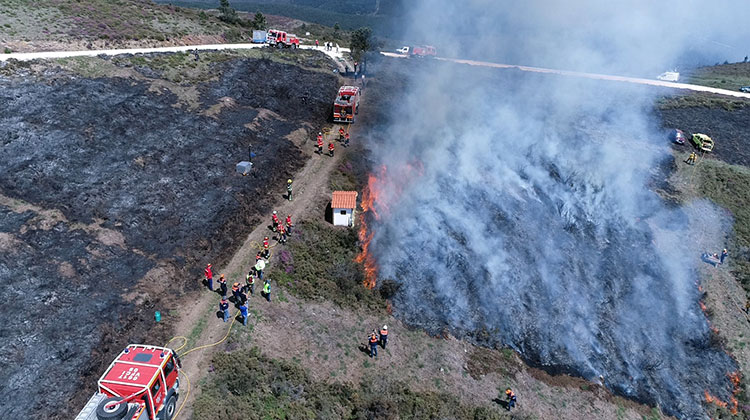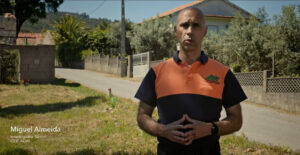On May 20th, the field trials coordinated by the Forest Fire Studies Centre of ADAI took place in Windfarm of Vila Nova, in the Municipality of Miranda do Corvo and District of Coimbra (Portugal).
The House Refuge project was part of the organisation of these trials, which were attended by around 80 researchers from various national research units, and were supported by three firefighter crews and three sapper crews.
The fire experiments were carried out on 10 plots in the Lousã Mountain, within the scope of several national and international projects related with wildfires in topics like the use of unmanned aerial means for fire characterisation, automatic suppression means on the ground and in the air, house protection systems, analysis of fire interference in the communication network, smoke emission and dispersion analysis, fire georeferencing systems using mobile phones, analysis of the extreme fire behaviour and impact of fire on gas containers, among other topics.
Framed with the House Refuge Project, one of the tests consisted of burning a plot with dense vegetation, which had a small house installed that was exposed to a high heat flux originating from the fire front. The separation between the fuels and the house was around 50cm.
The house used in the test was the Mirama model, purchased from Leroy Merlin, made of timber, with an area of 6m2 (2.83mx2.72m) and maximum height of 2.10m. To the original structure was added a roof with tiles type “Lusa” on “roofmate” material. Two windows with aluminium frames, two windows with wooden frames, one aluminium door and two plastic ventilators were also installed. The walls of the house were protected from fire with calcium silicate sheets.
These tests had two fundamental purposes: 1) analysis of the reaction of the door and windows to that heat flux – there was a clear deformation of the material, the breakage of three windows and the melting of the ventilators; and 2) the penetration of firebrands into the house through the roof and the ventilators –the roofmate was attacked by sparks but the same did not succeeded for the ventilators due to the unfavourable direction of the prevailing wind.







